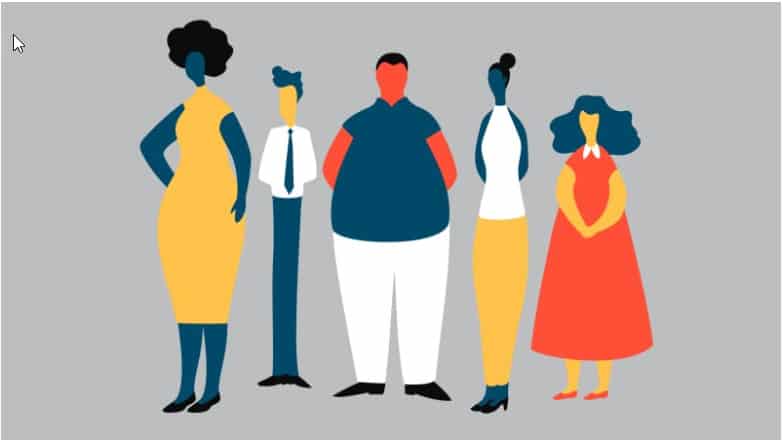As we enter a new year in 2021 we can reflect on how much has changed in the last 20 years. The mobile phone, which was once revolutionary, has been replaced by the ‘smartphone’, allowing us access to information wherever we are whenever we need it. We no longer hire DVDs to watch movies at home but instead stream our entertainment. Our attitudes to race, religion and sexuality have also changed just as radically.
The attitude towards those who are overweight or obese is changing too, but not as fast as it should. With more recent ‘body positive’ campaigns and influencers changing the medias portrayal of the “ideal shape”. No longer are all women models on fashion websites and in magazines a small size 6/8. We now see the inclusion of women of all sizes, from ‘average’ to ‘plus’ size. Although there is still a great deal of stigma surrounding those that are overweight or obese (and this does need to change), people are starting to acknowledge the increasing issue of obesity in western society and that action needs to be taken.
Health at Every Size
Reframing the conversation, the current momentum of Health at Every Size (HAES) offers a different approach to overweight and obesity, one that is more fitting for the age that we are living in. Traditionally, excess weight has been seen as the issue and therefore loss of excess weight has been the focus of health improvement initiatives. However, research has demonstrated that weight loss alone in people who are otherwise healthy does not prolong life.
HAES focuses instead on health and wellbeing as the primary motivator for changing behaviours; weight loss is thus reframed as an unintentional bi-product of these changes rather than the goal. HAES offers an effective alternative for conversations about weight with children and young people to help avoid or minimise the risk of eating disorders as it focuses on body acceptance and behaviour change for health, rather than change to reduce weight.
Weight loss vs a lifestyle change
For those suffering from severe obesity, a change in diet and introducing more exercise is often sadly not enough to be able to make long-term and long-lasting changes, bariatric surgery can be required in order to make the significant impact required.
Although bariatric surgery is only a tool to help assist weight loss, weight loss cannot be achieved by surgery alone. It requires significant changes to a person’s lifestyle, including both exercise and activity levels, in order to be effective. And these changes have to be adopted for the rest of a person’s life in order for them to remain a healthy weight (once they have reached it post-bariatric surgery); as some unfortunately find when they regain weight over time because they haven’t adjusted their lifestyle.
Those that have successfully lost weight following bariatric surgery may find themselves feeling disappointed at times. Why? Because they may not achieve what society views as a ‘normal’ weight. They may have excess skin as a result of weight loss, or still be unhappy with other aspects of their body shape. Although the significant weight loss has created many health benefits that will prolong, and in many cases, save lives, these people may still experience stigma of society’s attitude towards those who carry or who have carried excess weight. This is why the HAES movement is so important to consider.
Three Basic Concepts
HAES can be broken down into three basic concepts.
Respect – celebrating body diversity, and honouring differences in size, age, race, ethnicity, and all other human attributes.
Critical Awareness – challenging scientific and cultural assumptions about weight, valuing body knowledge and lived experience.
Compassionate Self-Care – learning to enjoy being physically active and eating in a flexible and attuned manner that values pleasure, whilst honouring internal cues of hunger, satiety and appetite, respecting social conditions which frame eating options.
If individuals can shift their focus away from their weight and losing weight and move towards the goal of leading a healthier lifestyle, then change will naturally occur. By focusing on fuelling the body with nutritious food that serves a purpose, rather than focusing on emotional elements of eating or making unhealthy choices out of habit or convenience people are able to avoid feelings of guilt while eating. Choosing to be more active and benefiting from the endorphins released by exercising, rather than seeing it as a tedious chore that has to be completed in order to follow a ‘diet’ or ‘weight loss plan’.
Acknowledging health benefits, not just weight loss is particularly important for people who are at risk of or currently have obesity-related co-morbidities such as cardiovascular disease and type II diabetes. Instead of choosing one model over another, the value for individuals, families, and the health system will come from integrating HAES as a clinical approach that mutually reinforces and is complementary with models of early intervention and with weight management services and programs.


0 Comments